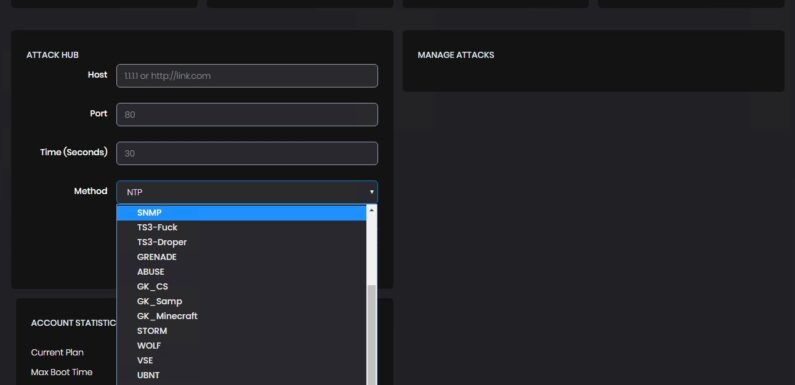
As our personal and professional lives become increasingly dependent on internet-connected devices and websites, we also grow vulnerable to cybersecurity attacks seeking to disrupt digital infrastructure. Among the most insidious threats are Distributed Denial-of-Service (DDoS) attacks powered by illicit IP booter services. By better understanding these hacking tools and how they enable even unskilled individuals to immobilize entire organizations with a few clicks, average internet users help mitigate the scalability of IP booter-driven attacks. Safeguarding online activities starts with awareness.
Defining IP booters and their capabilities
IP booters, also called “stressers,” provide on-demand DDoS attack services by weaponizing networks of malware-infected devices (often Internet of Things gadgets like security cameras or routers). Users simply pay a subscription fee to access an IP booter’s dashboard control panel, enter any IP address, select a method of attack traffic to flood that target, and then launch attacks instantly.
Attack traffic floods can include User Datagram Protocols (UDP), SYN requests, or amplification attacks spoofing requests from the target server itself to conceal the true attack origin. By overwhelming systems and connectivity bandwidth, targets become unresponsive unreachable, and knocked offline. Attacks may last only minutes, but the damage leads to substantial recovery costs.
Motivations behind booter-driven cyber attacks
The widespread availability of user-friendly IP booter panels enables even novice individuals to launch potent attacks anonymously for various malicious motivations:
- Financial gain – Ransom demands to stop sustained attacks that restrict business operations.
- Ideological – Activist groups suppressing political opponents or censoring controversial online content.
- Trolling – Bored teenagers or petty criminals simply seeking reactions by taking sites offline.
- Strategic advantage – Blocking competitor visibility during peak commercial seasons.
- Cyber warfare – Nation states testing attack capabilities by immobilizing key infrastructures like power grids.
While motives vary drastically, the outcomes remain uniformly detrimental across individuals, organizations, and governments affected by IP booter attacks.
Regular citizens becoming agents of positive change
Through collective action, concerned citizens help curb for-profit booter attack subscription services that care little about collateral disruption to innocent people, businesses, and economic stability. Every small effort raises protective barriers:
- Boost cyber hygiene by enhancing password security, updating firmware/software, using firewall/VPN apps, and avoiding malware traps. Eliminate vulnerabilities that amass devices into botnets.
- Carefully monitor kids and students for cyberbullying or petty hacking indicators suggesting IP booter curiosity exists locally. Guide them to ethical technical hobbies instead.
- Report suspected attack activity directly to website administrators immediately rather than assuming someone else will eventually handle the issues. Timeliness is key for effective threat response.
- Provide financial support to nonprofit organizations that specialize in strengthening international cybersecurity through hacker reformation programs, policy consulting, digital infrastructure advancement, and internet freedom initiatives.
- Spread general awareness regarding cyber threats by sharing informative online articles through social channels. Counteract misconceptions that “DDoS basics” training sites innocently spread.
By scrutinizing the business models and real-world implications of illegitimate use of IP stressers sites that peddle DDoS attacks to anyone with a disposable income, the prevalence of malicious cyber incidents meaningfully drops over time. Through direct intervention and global improvements towards cyber empathy and awareness, this techno tactic is reduced from a readily accessible offense to a rare last resort.


